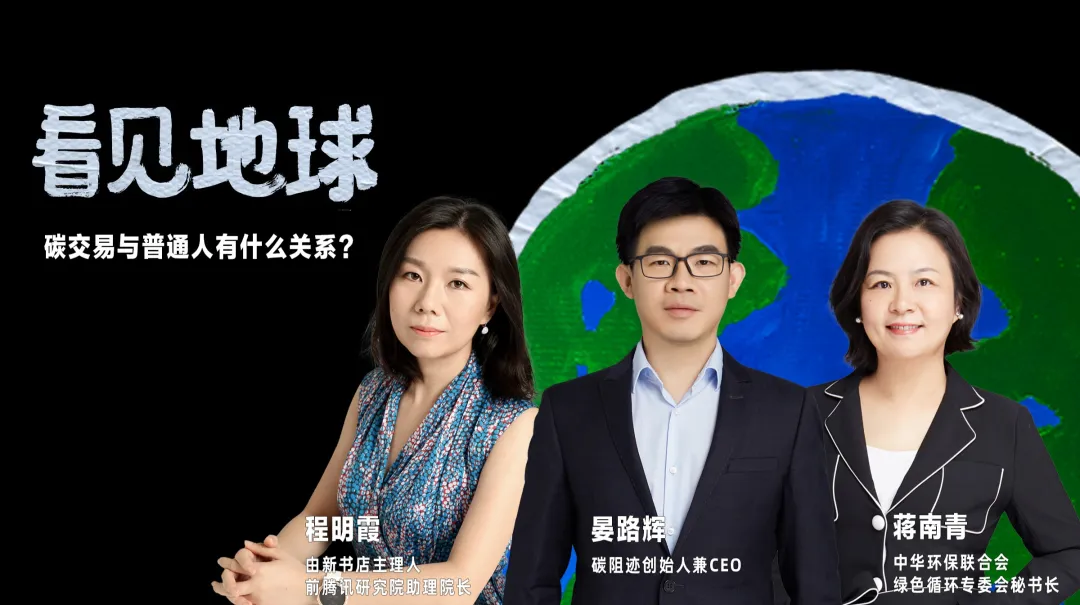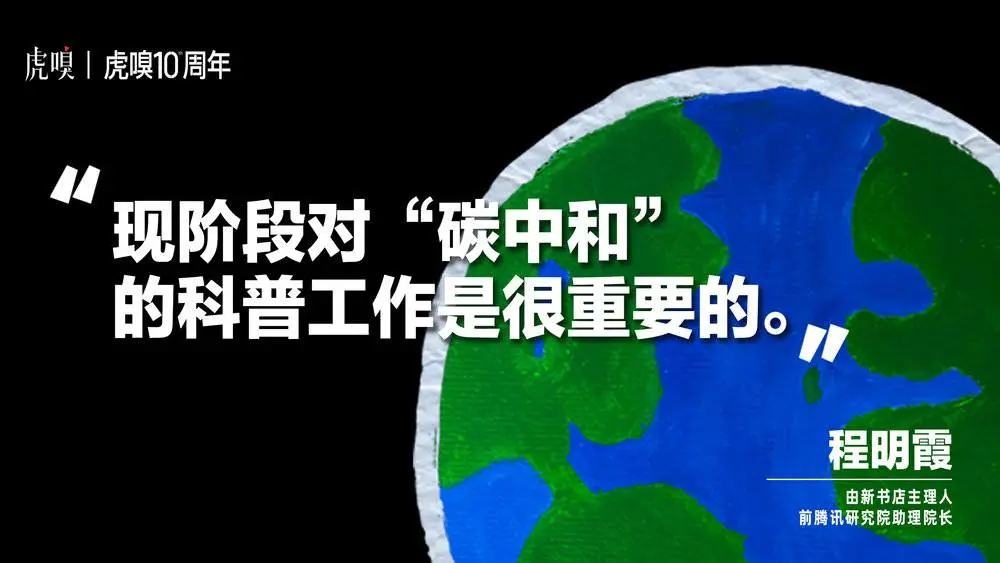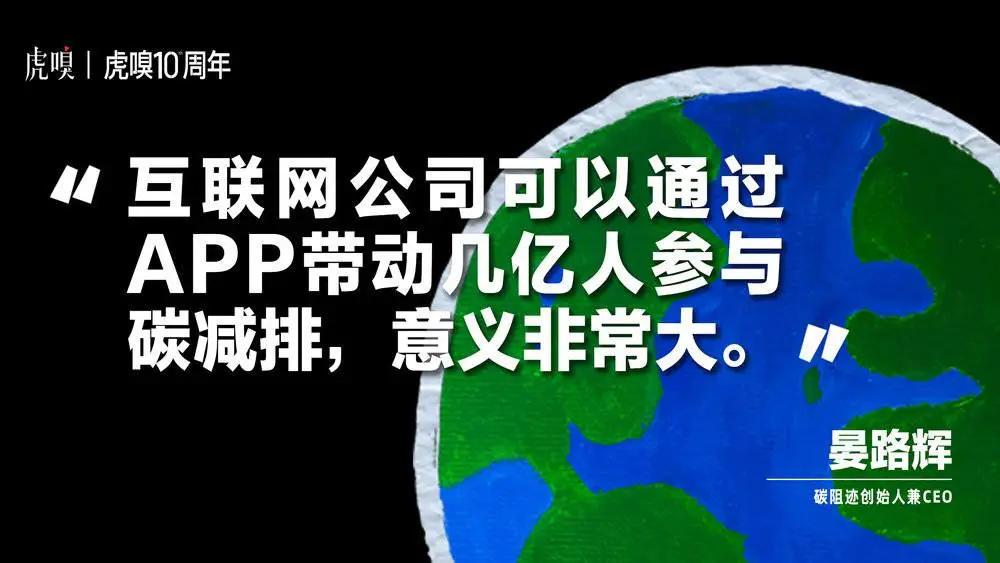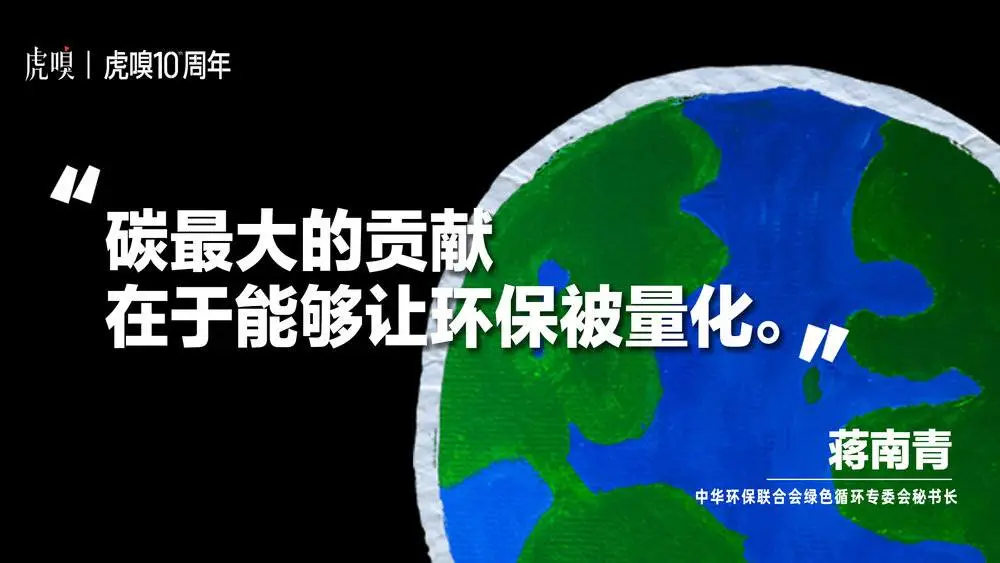
Produced by | “See·Earth” Special Planning
Author | Rainforest Underneath
In the universe, the probability of an Earth-like planet appearing is one in seven trillion. Just standing on the ground for a second is already an infinitely mysterious miracle. However, we often take the existence of the Earth for granted, and few people have seriously observed this planet beneath their feet: centuries of endless exploitation mean we should pay more attention and curiosity to the Earth, more reverence and love. Because we ourselves are fragments of life from Earth: I am Earth — “See·Earth” is the prelude to HuXiu's tenth-anniversary special series “Greater Vision.” More content series will be released in the future, stay tuned.
The following is a summary of the key points from the live stream content of “See·Earth” in the chapter “Seeing·Youth and Daily Life,” enjoy~
Host: Today, we are delighted to invite Lu Hui, Founder and CEO of Carbonstop; Nanqing Jiang, Secretary-General of the Green Circulation Popularization Committee of the China Environmental Protection Federation; and Mingxia Cheng, Chief of Xin Bookstore, to discuss carbon. In recent years, "Dual Carbon" has become popular, and many people have started paying attention to carbon trading, wondering how something non-physical like carbon can be bought and sold?
Lu Hui: From a trend perspective, many companies across various industries will gradually be allocated carbon emission quotas by the government. If they exceed these limits, they will need to purchase additional quotas to meet their obligations. Companies that perform well in emission reduction can sell their surplus quotas or emission reductions, which is what we call carbon trading.
Nanqing Jiang: Reducing carbon emissions requires significant investment, so how do we motivate high-emission industries like power, steel, cement, and chemicals to take action? Market mechanisms are necessary. Carbon trading is similar to a commercial market, using economic levers to control total emissions. As the government gains more experience, it will gradually relax market controls and make continuous adjustments.
Carbon Trading Market: Companies Profit from Information Asymmetry
Host: Can only businesses participate in carbon trading?
Lu Hui: Currently, it is primarily aimed at businesses, though there is some participation from individual consumers (C-end), but the volume is relatively small.
Host: Is the trading market unified nationally, or do different regions have their own standards?
Lu Hui: There are two markets: one is the national market, where the national carbon quota trading market officially launched on July 16, 2021, initially involving over 2,000 power companies.
The second is the regional pilot market, which since 2013 has included nine local trading venues in Beijing, Shanghai, Tianjin, Chongqing, Guangdong, Shenzhen, Hubei, Fujian, and Sichuan, covering a wide range of sectors including public institutions and services.
For example, the Beijing carbon trading market involves over 800 companies, including the SKP mall, which is one of the carbon-emitting entities, as well as places like the Forbidden City and Tsinghua University, which are required by the local government to control and reduce emissions.
Mingxia Cheng: Speaking of SKP and the Forbidden City, many might wonder why they would be part of the carbon trading market? It's because many aspects of modern living, such as eating, wearing, housing, and transportation, involve high carbon emissions. One could say that the past two hundred years of industrialization have been characterized by this pattern.
Host: But now, with international conflicts, the ongoing pandemic, and a sluggish stock market, would these conditions affect carbon trading?
Mingxia Cheng: China is still a developing country, and we are in a relatively resource-scarce stage. When the economy slows down, people tend to prioritize economic growth and ensuring people's livelihoods. Therefore, many issues are quite complex, whether for businesses or the public, there is a lot of information to digest.
I consider myself an environmentalist, but environmental issues are vast, encompassing oceans, air, transportation, extreme weather, and more. I didn't know how to better participate in environmental efforts until last year when I read Bill Gates' book Climate Change and the Future of Humanity. The book provides a systematic and clear explanation of climate and environmental issues, finally making me understand how individuals, companies, and countries can participate in carbon emission reduction and carbon neutrality efforts. Therefore, I believe that popularizing knowledge about carbon neutrality is crucial and currently insufficient, and media should play a more active role in this area.

Host: What are some of the most promising strategies for emission reduction within the industry?
Lu Hui: One strategy is to focus on the largest emitters while letting smaller ones off. For example, in power generation, several major power groups emit close to 500 million to one billion tons of carbon annually. China's carbon neutrality efforts must target these companies directly. At the same time, it cannot be limited to just these giants; all sectors, including institutions and individual consumers (C-end), must have opportunities to participate to create a positive atmosphere and trend. Many internet companies, for instance, drive millions of users to participate in carbon reduction actions through their applications, which is highly significant.

Mingxia Cheng: I have a question: Which departments within a company typically handle carbon trading?
Lu Hui: It depends on whether the company is included in the carbon trading scope. If it is, companies with lower emissions may have an ESG department or an environmental-related department responsible for implementing carbon neutrality actions. For higher-emitting companies, like those emitting hundreds of millions of tons of carbon, there are dedicated carbon asset companies. Carbon traders can buy low and sell high based on market fluctuations, similar to stock trading.
Nanqing Jiang: Information asymmetry between buyers and sellers can lead to significant profits; I've seen carbon asset trading companies earn hundreds of millions.
Lu Hui: About ten years ago, during international carbon trading, small consulting firms sold China's wind and solar power emission reductions to developed European countries, selling several million tons of international emission reductions annually. At its peak, the price could reach several dozen euros per ton, generating hundreds of millions of RMB annually.
Mingxia Cheng: We could also push for the appointment of a Chief Carbon Officer (CCO) to manage internal coordination.
Nanqing Jiang: Carbon emissions are related to the stage of social development. We are still in the early stages of reducing emissions from heavy industries, and many consumer-related companies in clothing, food, housing, and transportation have relatively low direct emissions. For example, Apple's direct emissions account for only 20%, and Nestlé, a food company, mainly has indirect emissions. Moving forward, internet companies have even fewer direct emissions but can significantly influence society as a whole; a single platform can engage hundreds of millions of users. Thus, the focus shifts from energy to products and then to human behavior. However, while there are formulas for calculating industrial and product emissions, there are no standardized methods for measuring personal emission reductions yet.
Can Individuals Become “Carbon Sellers”?
Mingxia Cheng: I think it's essential to inform people about simple and feasible ways to reduce emissions. Everyone should have a carbon ledger, tracking daily emissions from morning till night, and even competing with others in rankings. Currently, the main issue on the C-end is lack of awareness—people don't understand why this is important—and insufficient incentives to act.
Nanqing Jiang: Companies can also use carbon footprint labels to convey this information to consumers. Previously, all our environmental efforts were unquantifiable, but the biggest contribution of carbon is that it can be measured, traded in the market, and ultimately generate income.

Host: How might individuals participate in carbon trading in the future?
Lu Hui: One way is as individual investors in the carbon market, for example, the Hubei carbon trading market has already opened to individual carbon trading. Another way is through personal emission reduction actions in carbon incentive programs. For instance, millions of citizens in Guangdong can earn carbon credits by riding shared bikes, collectively contributing to the region's carbon market with tens of thousands of tons of emission reductions.
Nanqing Jiang: Our current carbon incentive market is somewhat like Ant Forest, which many people are familiar with.
Host: How exactly do carbon credits function?
Lu Hui: These credits can be bundled and sold to steel and power companies in the carbon market, resulting in real transactions and direct financial rewards.
Nanqing Jiang: Large state-owned enterprises, besides reducing emissions in their factories, also have hundreds of thousands of employees who can participate in carbon incentive programs. However, they cannot be included in the national carbon market due to the risk of double counting. We could consider a separate, inclusive market with diverse engagement methods. Since personal behaviors occur in many contexts, a specialized platform is needed to record them, ensuring that once credits are redeemed, they cannot be reused. All records must be uniformly tracked to prevent issues.
Mingxia Cheng: Currently, there is a lack of a nationwide carbon footprint application for individuals. I've tried many personal carbon footprint tracking mini-programs, but most are not user-friendly. The tracking technology in this area is still immature. I have high hopes for tech giants; carbon neutrality is a huge market with high technological content and vast innovation potential.
Host: Perhaps such an application will appear next year or the year after. I think it's worth looking forward to.
Nanqing Jiang: Currently, there is a shortage of professionals in the carbon field, and recruitment is challenging. Over the past decade, many talents have left the industry, especially after the carbon market was suspended.
Host: Some netizens ask if they can engage in carbon trading because they have planted forests covering tens of thousands of acres?
Nanqing Jiang: Many forests in China are state-owned, and not necessarily privately owned. Additionally, existing natural forests are gifts from nature and are not related to individuals. Owning a forest does not automatically qualify one for carbon trading. Forestry carbon sequestration involves many technical requirements, so the idea is simpler than it seems.
